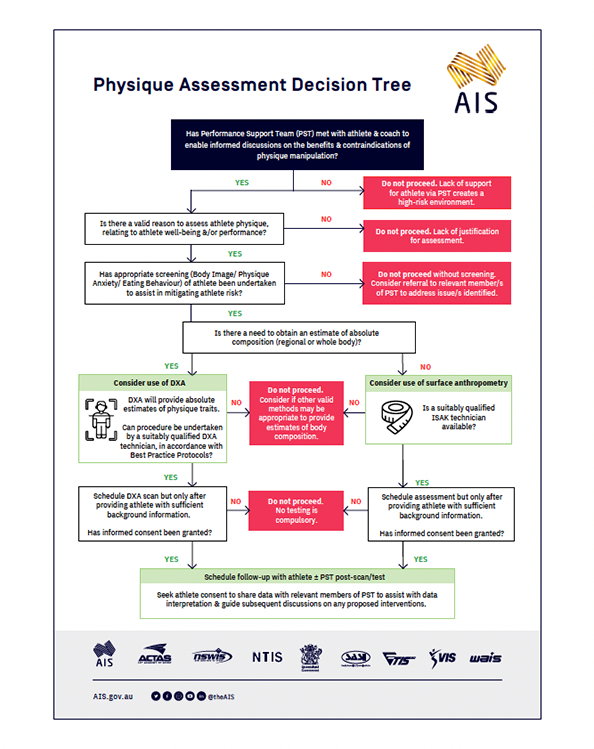The monitoring of body composition is common amongst athletic populations, as a means of providing insight into health and/ or performance variables, as well as to monitor changes in response to growth and maturation, or specific training and nutrition programs. The impact on performance likely varies between sports, but even in those sports in which there is a clear association between body composition and performance, it’s important to recognise it’s just one factor of many that may need to be considered. Overemphasizing the impact of body composition on performance is inappropriate, detracting attention from far more important priorities.
Amongst athletic populations, two (2) methods of assessing body composition are commonly used... either DXA or surface anthropometry (refer to Physique Assessment Decision Tree below). In general, DXA is best used when you require an estimate of absolute body composition, either at the whole-body level, or a specific body region, including legs, arms or torso. Surface anthropometry is best when wanting to track longitudinal changes in body composition in response to training and or dietary adjustments. Testing usually includes skinfolds, with or without girth measurements, to interpret body composition. The assessment of skinfolds merely measures the thickness of skin and fat that lies directly underneath this at specific sites on your body.
When undertaking DXA scans for the assessment of body composition, it is important to adhere to Best Practice Protocols relating to the acquisition and analysis of DXA data. Best practice also takes into consideration, and prioritises, the physical and emotional well-being of the athlete throughout the process.
Physique Assessment Decision Tree

This resource is designed to assist practitioners in determining the most appropriate physique assessment practice to best support high-performance athletes.
Athlete Resources – DXA assessment
It is important that athletes feel truly informed as part of any measurement, test or assessment that they are agreeing to participate in. The following videos have been designed to be shared with athletes prior to their DXA assessment, for improved awareness on what to expect as part of a DXA scan, and how to best prepare for a DXA scan to ensure high quality, accurate and reliable data capture.
What to expect during your DXA assessment
How to prepare for your upcoming DXA scan